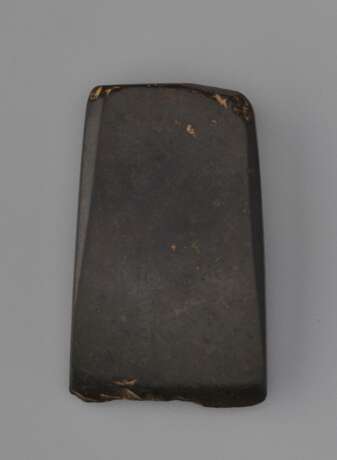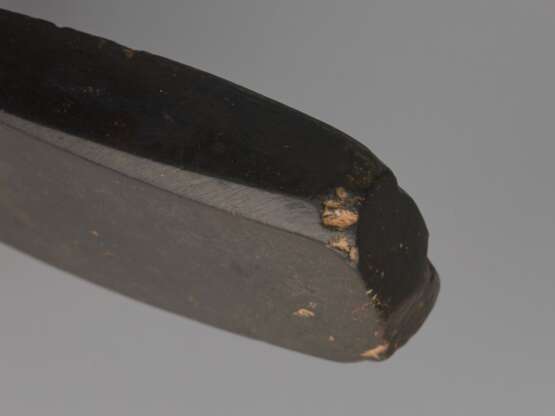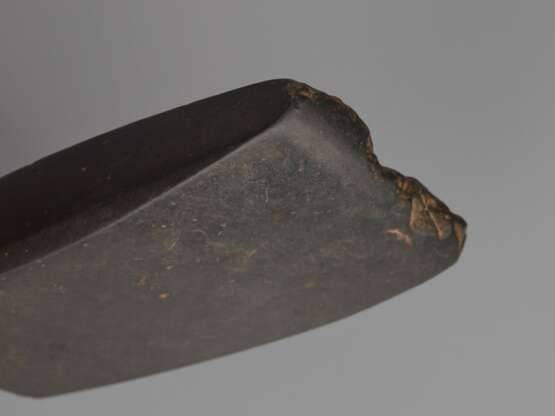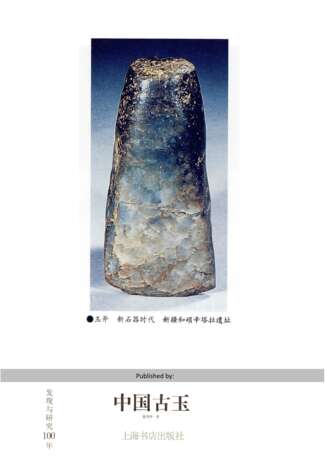ID 944
Lot 50 | EIN STEINZEITLICHES KLEINES BEIL
Estimate value
€ 2 400
Stein
China
Neolithische Zeit, ca. 2500 - 2000 vor
HÖHE 8,3 CM, GRÖSSTE STÄRKE 17 MM
小石斧。中國,新石器時代,約公元前2500-2000 年。高8.3厘米,厚1.7厘米。維也納私人舊藏。
Dieses steinzeitliche kleine Beil stammt aus der berühmten Sammlung von Max Loehr und war gemäß seinen Aufzeichnungen in der Inneren Mongolei entdeckt worden. Loehr lebte bis 1988, war deutscher Wissenschafter und unterrichtete zuletzt an der Harvard University - siehe auch unten. Das schwarze Beil hat eine einfache Form, die sich zur Schneide hin etwas verbreitert. Der Körper ist kräftig, eine Öffnung - etwa für einen Stiel - ist nicht vorhanden. Die Hauptflächen sind zur Schneide hin leicht bogig, die Schneide selbst ist mehr stumpf. Nur auf einer Seite sind die Längskanten abgeschrägt und werden zum schmäleren Rücken hin deutlich breiter. Schleifspuren sind an dem Stück noch immer zu erkennen. Altersbedingt gibt es an den exponierten Kanten, besonders im Bereich der Schneide, Ausbrüche. Es sei noch bemerkt, daß Loehr selbst das Stück einen “chisel” genannt hat, im Deutschen Meißel oder Beitel. Das Wort “Beitel” ist heute kaum mehr in Gebrauch und unter “Meißel” kann man durchaus eine ganz andere Vorstellung haben. Wir nennen es “Beil”, weil es rein formal gesehen einem solchen entspricht, wenn auch verkleinert.
Expertise: Wolfmar Zacken & Filippo Salviati
Vor dem Besitz von Max Loehr befand sich das Stück in der Sammlung Dr. Mueller, aus dieser wurde es von Charlotte Horstmann erworben, 1948 kam es in die Sammlung Loehr, danach J. J. Lally in New York. Max Loehr stammte aus Chemnitz, studierte und arbeitete in München, Beijing, unterrichtete dort an der Tsinghua Universität, danach in Michigan. Loehr hat acht Fachbüche publiziert, darunter „ANCIENT CHINESE JADES“, FoGelbgold Art Museum, Harvard University, Massachusetts
| Address of auction |
Galerie Zacke Mariahilferstrasse 112 1070 Wien Austria | ||||||||||||||
|---|---|---|---|---|---|---|---|---|---|---|---|---|---|---|---|
| Preview |
| ||||||||||||||
| Phone | +00 4315-320 452 | ||||||||||||||
| Fax | +43-1-5320452-20 | ||||||||||||||
| Buyer Premium | 27.000 | ||||||||||||||
| Conditions of purchase | Conditions of purchase | ||||||||||||||
| Business hours | Business hours
|






